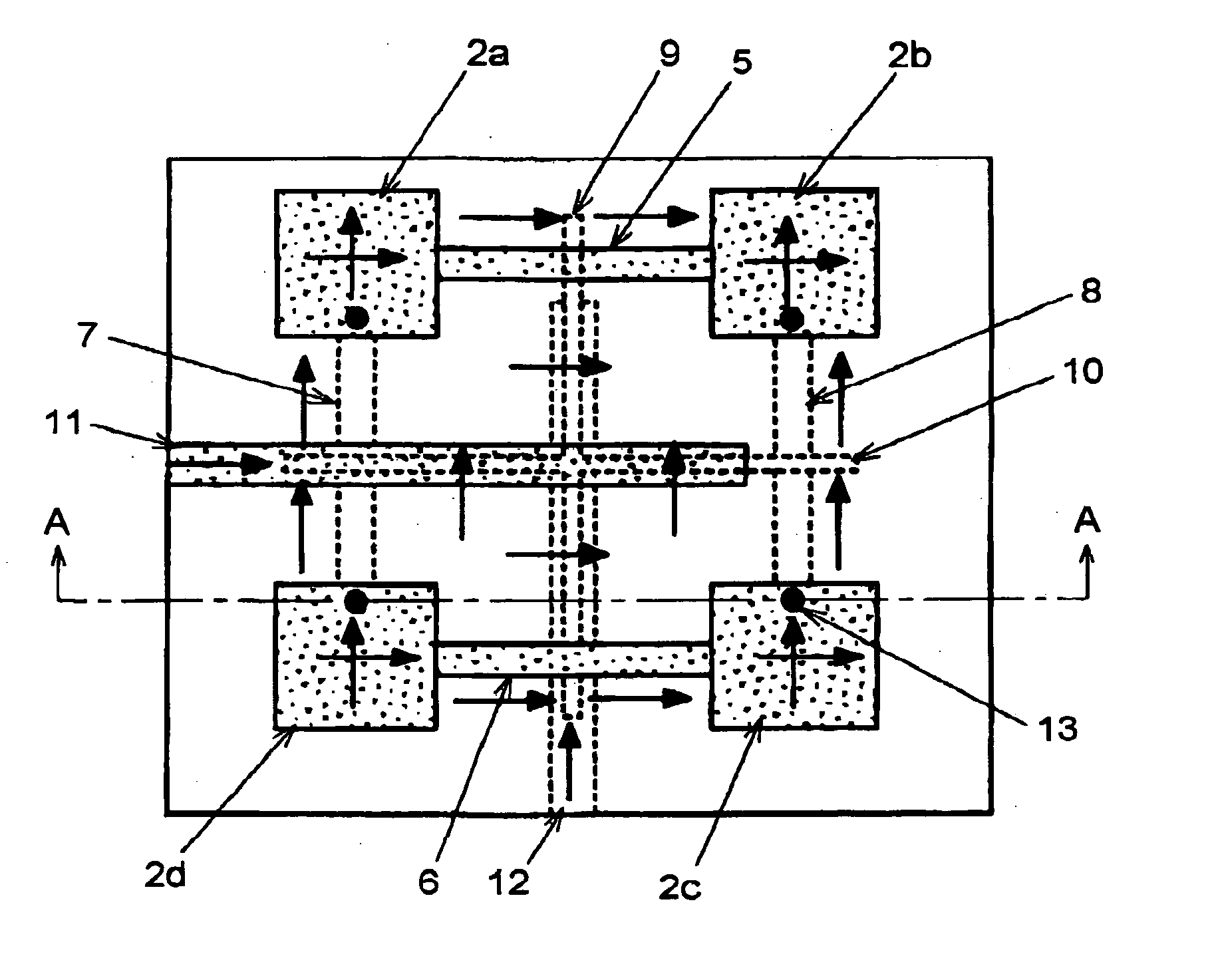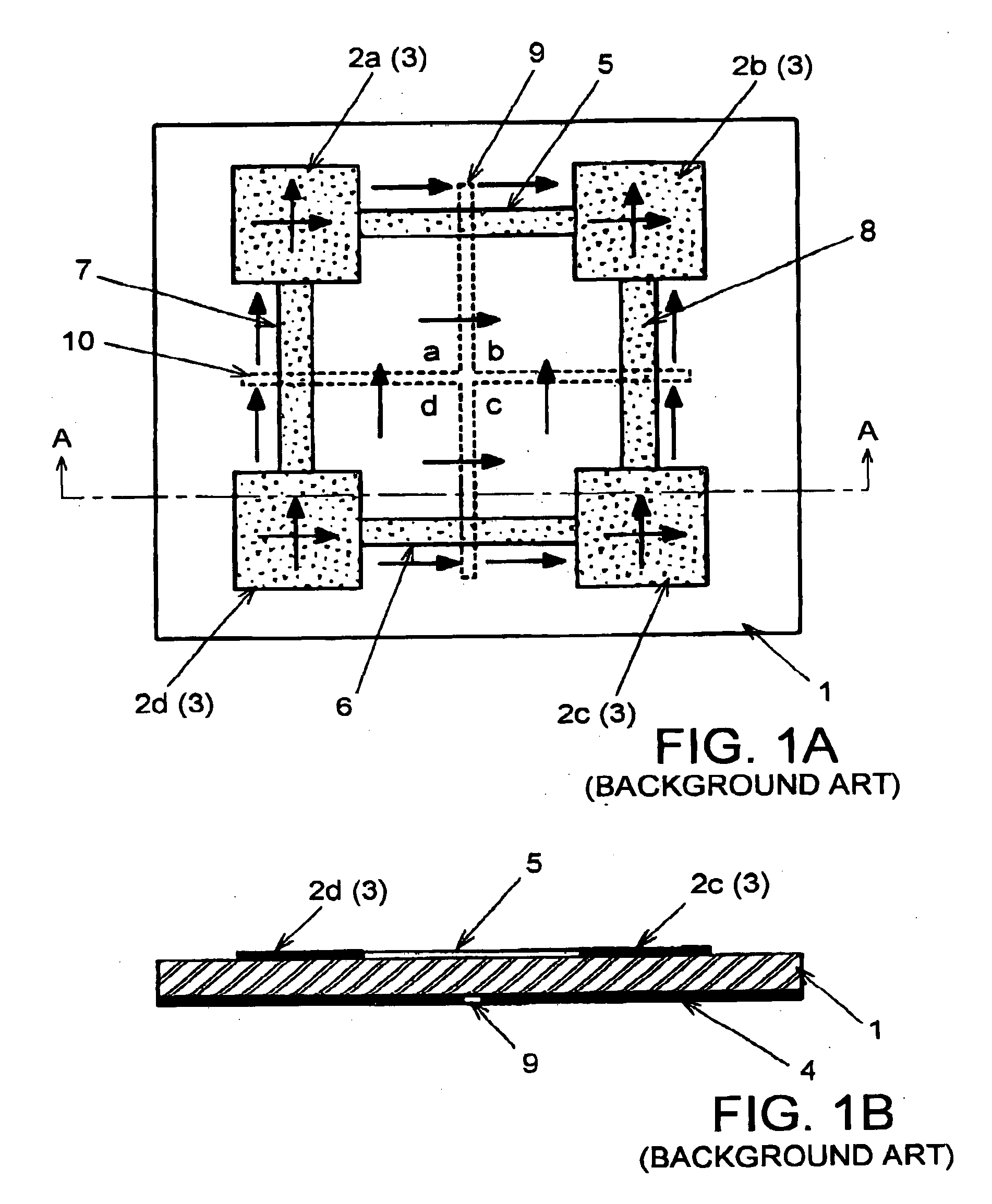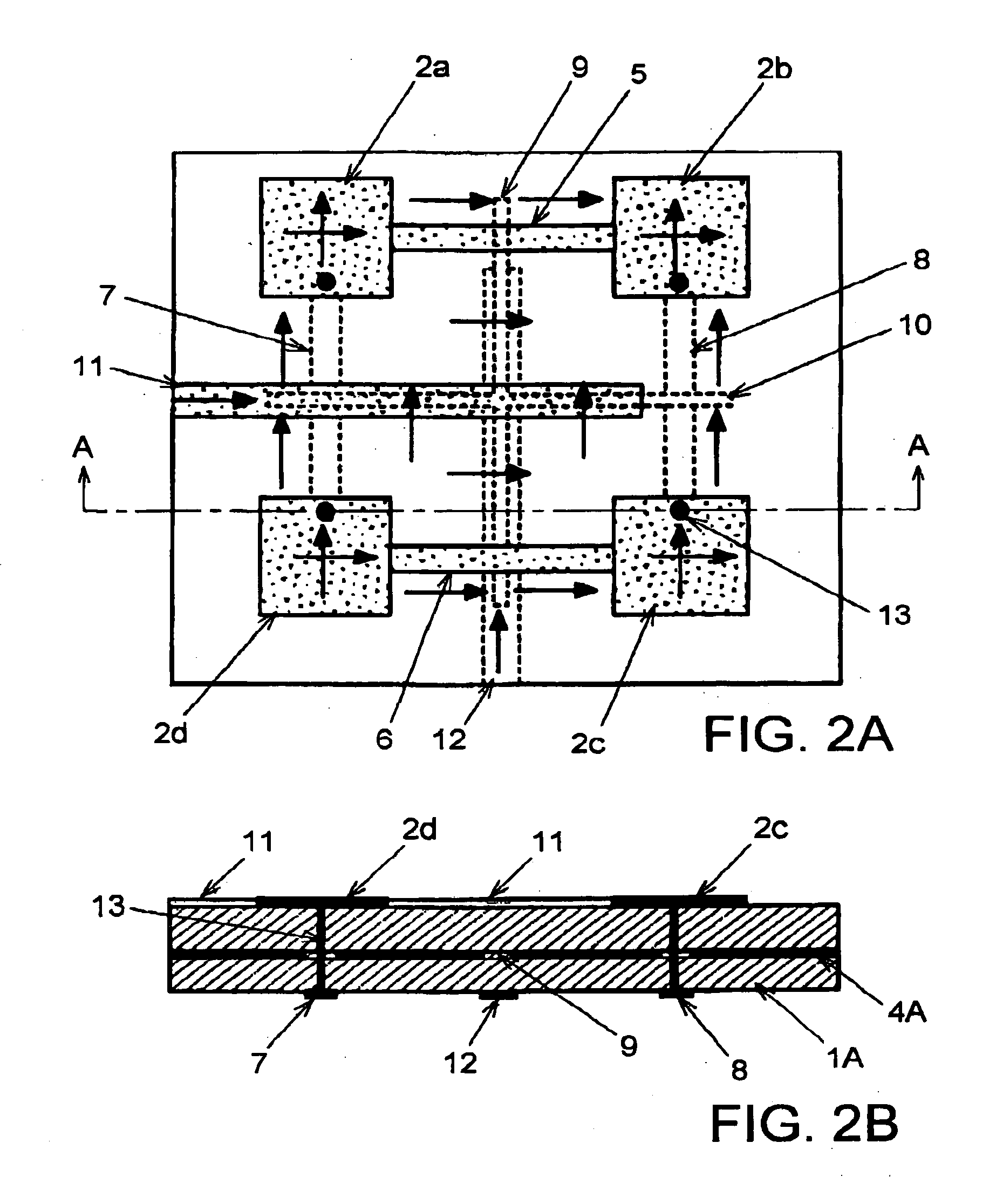Planar array antenna
a technology of array antennas and antennas, applied in the direction of individual energised antenna arrays, resonant antennas, radiating elements structural forms, etc., can solve the problem of difficult planar construction of antennas including feeding systems, and achieve the effect of promoting the surfaceness of antennas
- Summary
- Abstract
- Description
- Claims
- Application Information
AI Technical Summary
Benefits of technology
Problems solved by technology
Method used
Image
Examples
first embodiment
[0038]FIGS. 2A and 2B illustrate a planar array antenna according to the present invention. In FIGS. 2A and 2B, the same reference numerals will be attached to the same constituent components as those in FIGS. 1A and 1B, and the repeated description thereof will be omitted.
[0039] The planar array antenna of the first embodiment illustrated in FIGS. 2A and 2B is configured by using multi-layer substrate 1A having intermediate layer conductor 4A. Multi-layer substrate 1A is laminated In two layers with a dielectric substrate, and intermediate layer conductor 4A is formed across an almost entire plane of the laminated face of the two dielectric substrates. Intermediate layer conductor 4A is made of a metal foil and functions as a ground conductor In microstrip lines. A first principal surface of multi-layer substrate 1A, similarly to those shown in FIGS. 1A and 1B, is disposed with four antenna elements 2a to 2d of a microstrip line type corresponding to the corners of a geometrically ...
third embodiment
[0056]FIGS. 5A to 5C illustrate a planer array antenna according to the present invention. FIG. 5C is equivalent to a view seen through from above the planar array antenna Illustrated in FIG. 5A, and depicts the components at the rear surface side by a solid line.
[0057] In this planar array antenna, a basic configuration in which a feeding system is comprised of mutually orthogonal first and second slot lines 9 and 10 which are provided in intermediate layer conductor 4A of the laminated face of multi-layer substrate 1A is the same as the above described embodiments. In the third embodiment, without using via holes and air bridges by conducting wires, the feeding to each of antenna elements 2a to 2d from two orthogonal directions, that is, horizontal and vertical directions, is made possible.
[0058] Four corners of one principal surface in multi-layer substrate 1A is formed with four antenna elements 2a to 2d of a microstrip line type, and openings 16 are formed at a corresponding p...
fourth embodiment
[0061]FIGS. 6A to 6C illustrate a planar array antenna according to the present invention. FIG. 6C is equivalent to a view seen through from above the planar array antenna shown in FIG. 6A, and depicts the components of the rear surface side by a solid line.
[0062] The planar array antenna according to the fourth embodiment is different from the third embodiment in that, while the feeding is made without using via holes and air bridges as those of the third embodiment, as an antenna element, instead of a microstrip line type, a slot line type is used.
[0063] Intermediate layer conductor 4A of multi-layer substrate 1A is provided with four annular aperture lines 17, which constitute antenna elements 2a to 2d of a slot line type. Here also, four antenna elements 2a to 2d are disposed at the four corners of a geometrically regular square shape. Each of aperture lines 17 is formed in a shape along the four sides of the regular square shape. Intermediate layer conductor 4A is, similarly t...
PUM
 Login to View More
Login to View More Abstract
Description
Claims
Application Information
 Login to View More
Login to View More - R&D
- Intellectual Property
- Life Sciences
- Materials
- Tech Scout
- Unparalleled Data Quality
- Higher Quality Content
- 60% Fewer Hallucinations
Browse by: Latest US Patents, China's latest patents, Technical Efficacy Thesaurus, Application Domain, Technology Topic, Popular Technical Reports.
© 2025 PatSnap. All rights reserved.Legal|Privacy policy|Modern Slavery Act Transparency Statement|Sitemap|About US| Contact US: help@patsnap.com



